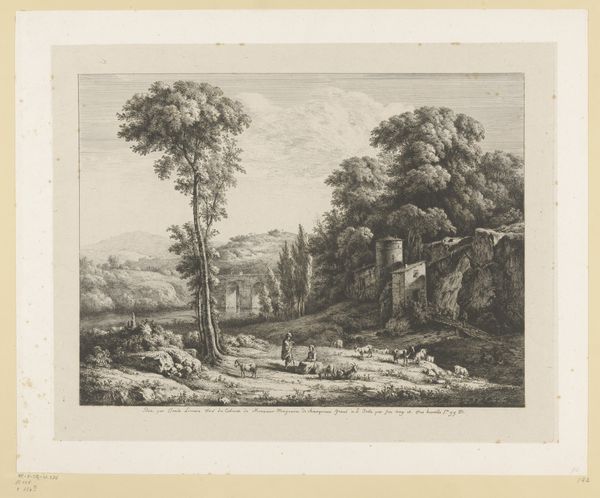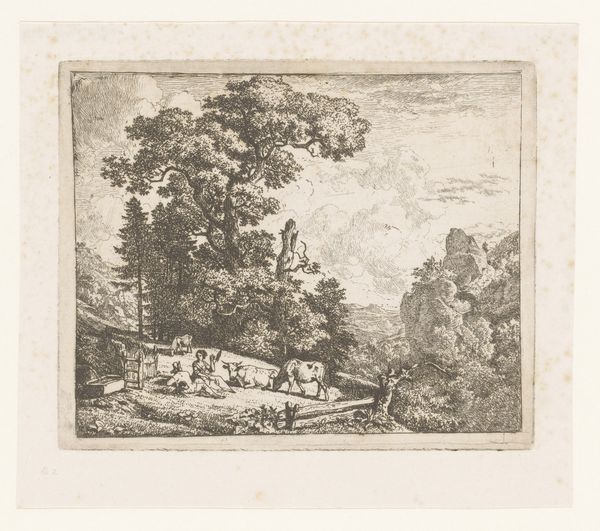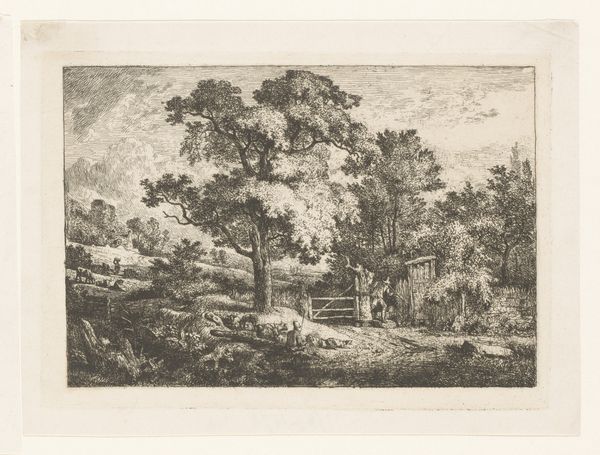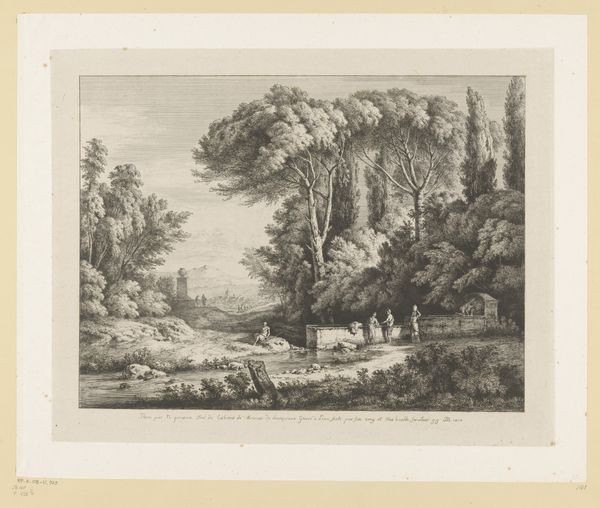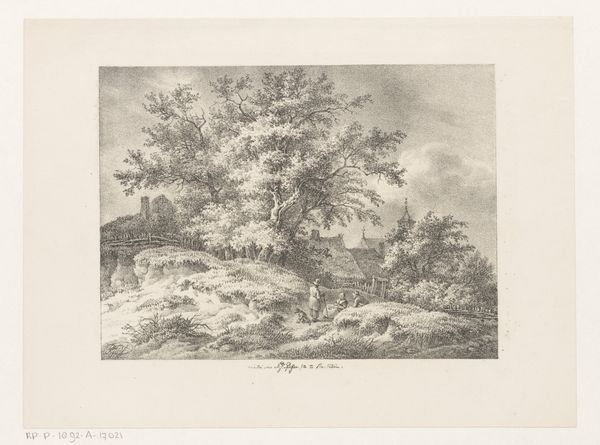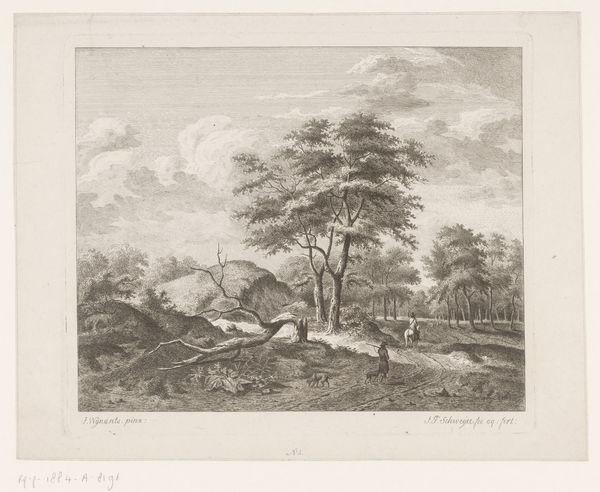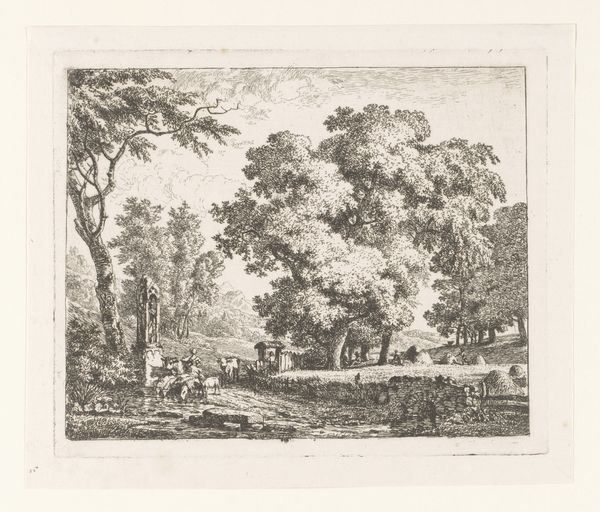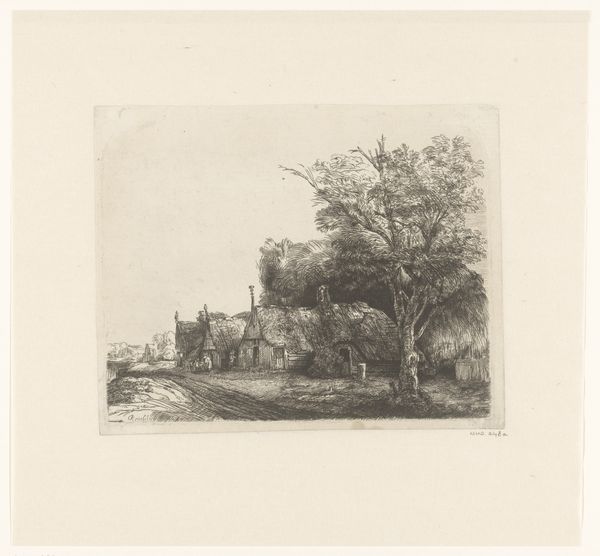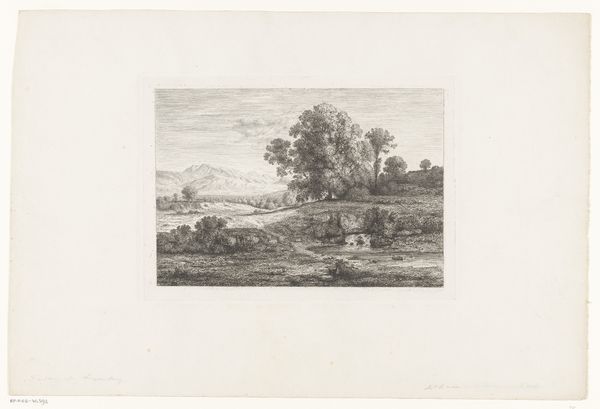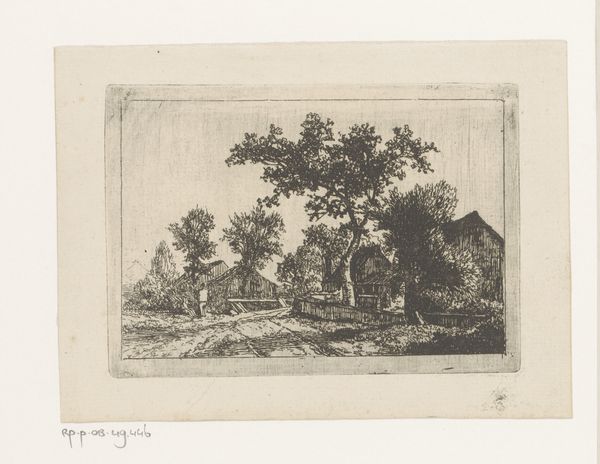
print, etching, paper
#
ink paper printed
# print
#
etching
#
landscape
#
paper
#
romanticism
Dimensions: height 209 mm, width 250 mm
Copyright: Rijks Museum: Open Domain
Curator: This print, titled "Landschap met twee figuren en een kudde schapen bij een altaar," translating to "Landscape with two figures and a flock of sheep near an altar," comes to us from Jean Louis Demarne. The piece is dated sometime between 1762 and 1829. Editor: My first thought is how idyllic the scene feels, despite being rendered in stark monochrome. There’s a gentle light filtering through the trees and a stillness that almost vibrates off the paper. The scale, being a print, likely adds to its intimate nature. Curator: Indeed. The romanticist style really comes through in the composition, particularly how the artist has created depth using varied densities of etching. The eye is drawn back from the sheep in the foreground, past the altar, and towards the faint city in the distance. The artist carefully plays with value. Editor: Focusing on that etching technique, I wonder about the labour involved. Demarne clearly employed considerable skill to achieve this level of detail and atmospheric effect. Each line meticulously placed, revealing an intimacy with the material and demanding patience and expertise in a replicable mode. Was this produced as a unique image or mass printed, and who consumed the prints? Curator: I suspect it was intended for wider circulation, yes. Although its status as an etching gives it a certain status as high art, you raise a good point about the materials; the confluence of the common, accessible paper combined with the refined technique of etching really does bridge that gap. It complicates our assumptions about value, doesn't it? The material underpins its formal success. Editor: It certainly does, revealing social strata through the choices made at each level of production. Thinking about those formal qualities we began with, and adding to the consideration the realities of 18th-century artistic labor allows us to have a wider, more nuanced picture of Romantic landscape, what do you think? Curator: Precisely! Demarne's work serves as an important reminder that understanding art requires that we acknowledge the many artistic modes involved with its birth, whether a highly unique application or one built from common means.
Comments
No comments
Be the first to comment and join the conversation on the ultimate creative platform.

